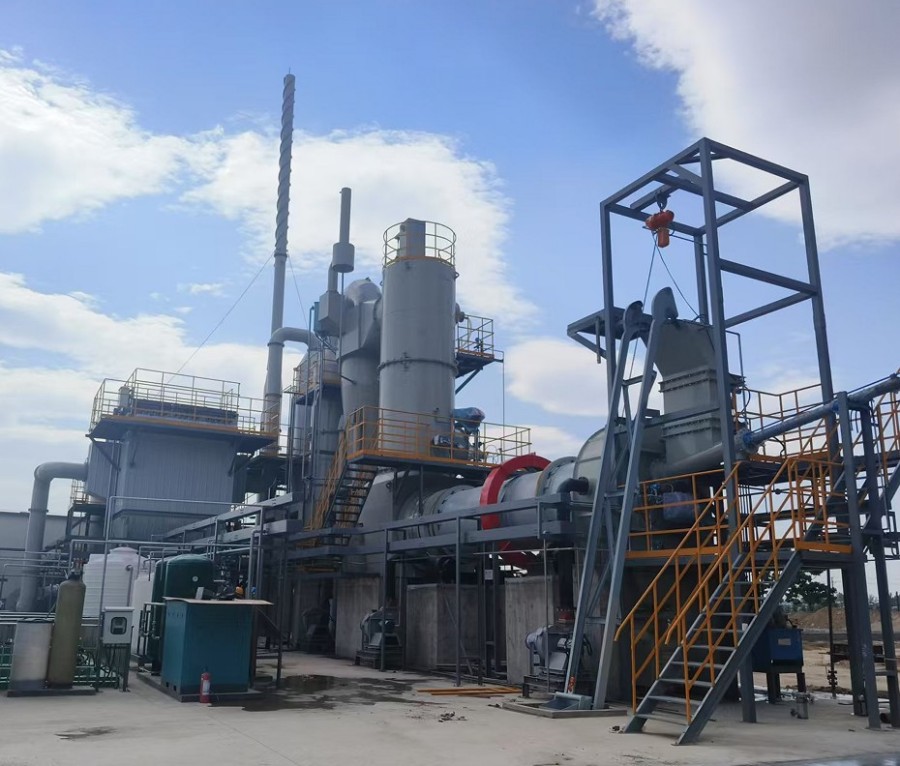- This topic is empty.
-
AuthorPosts
-
12/09/2025 at 18:29 #9550
With the continuous development of modern industry in our country, the
quantity of various hazardous wastes is constantly increasing, and various
hazardous wastes have various hazardous characteristics, including
radioactivity, infectivity, corrosiveness, flammability, explosiveness, chemical
reactivity, and toxicity. If hazardous wastes cannot be properly disposed of and
managed, they can easily pollute the environment and seriously affect human
health and ecological environment. Therefore, the harmless treatment of
hazardous waste has been widely applied. Currently, the most mature treatment
method for hazardous waste is incineration, and the waste treatment and disposal
process mainly uses rotary kilns to incinerate hazardous waste.
1、Selection of Incinerator Types
The incinerator is one of the most critical equipment in the incineration
system. With the development of incineration technology, there are more and more
types of incinerators with different furnace structures. Classified by
structural type, there are mainly rotary kilns, fixed bed incinerators,
fluidized bed incinerators, and liquid jet incinerators. Rotary kiln is a
multifunctional waste incineration device that integrates incineration and
pyrolysis, and can be widely used for the incineration of various solid wastes,
sludge, toxic and hazardous wastes, and even liquid wastes. Overall, rotary
kilns have the advantages of flexible feeding methods, stable equipment
operation, and relatively low operating costs. For chemical hazardous waste, it
often has the characteristics of large quantity, multiple types of solid waste,
and complex composition. In practical engineering applications, it is
recommended to use rotary kilns as chemical hazardous waste treatment and
disposal equipment.2、Incineration treatment process
Generally speaking, an incineration system based on a rotary kiln incinerator
should consist of four parts: compatibility pretreatment, feeding system, rotary
kiln, and secondary combustion chamber.(1) Compatibility pretreatment
In practical engineering applications, hazardous waste to be incinerated
often has various forms and complex compositions. Therefore, in order to ensure
stable feeding and smooth operation of the incineration system, and to achieve
harmless treatment while reducing operating costs, it is necessary to carry out
compatibility pretreatment of solid waste before feeding. There are two main
control factors for compatibility pretreatment: (1) balancing the calorific
value and moisture of waste, ensuring stable incineration, and saving auxiliary
fuel. Suggest that the calorific value of the waste after compatibility should
be between 3000 and 3500 kcal/kg; (2) Balance the composition of waste entering
the kiln to ensure that the flue gas meets the emission standards. Generally
speaking, the highest content of acidic pollutants entering the furnace is:
Cl<2%, F<0.5%, S<2%, Br<0.2%, I<0.2%, P<0.5%. Hazardous waste
containing organic heavy metal substances should be loaded into the furnace in
barrels to control the overall quantity.(2) Feeding system
Different feeding methods should be adopted for different types of materials.
Specifically: (1) For large blocks or waste that is difficult to package, they
need to be crushed by a crusher and stored in a waste storage pit, and then
lifted and loaded into a rotary kiln; (2) Bulk solid waste should be stored in a
waste storage pit after simple compatibility based on the size of the external
dimensions and the detected calorific value. Finally, it should be lifted and
loaded into the hopper, and pushed into the rotary kiln by a hydraulic piston;
(3) The waste liquid should be sprayed into the incinerator for incineration
treatment through the waste liquid atomization pump and atomization system.(3) Rotary kiln
Hazardous waste is fed into the rotary kiln body through the feeding
mechanism for high-temperature incineration, and the waste is completely
incinerated into high-temperature flue gas and ash in the kiln body. The
reasonable design of the rotary kiln body is the basic guarantee for the
effectiveness of hazardous waste treatment and disposal. In practical
engineering design, the incineration time should generally be controlled at
around 60 minutes (60-120 minutes), the operating temperature should be
controlled at around 850 ℃, and the furnace speed should be controlled between
0.2~5.0 r/min. At the same time, to ensure the downward transportation of
materials, it is advisable to maintain a certain inclination of the rotary kiln,
preferably at 2 °. In addition, the selection of refractory materials and
masonry methods in the kiln should be adjusted according to the characteristics
of the actual incineration materials to ensure the durability of the refractory
materials. So as to ensure the good and stable operation of the rotary kiln
body.(4) Secondary combustion chamber
The high-temperature flue gas and ash generated by the combustion of the
rotary kiln enter the secondary combustion chamber from the kiln tail. The main
function of the secondary combustion chamber is to further thoroughly decompose
and destroy the harmful substances that have not been burned out in the flue gas
produced by primary combustion, in order to meet emission requirements.
According to the national "Technical Specification for Construction of Hazardous
Waste Centralized Incineration and Disposal Projects" HJ/T176-2005, the
secondary combustion chamber should be calculated based on the design
requirement that the residence time of flue gas above 1100 ℃ should be greater
than 2 seconds to ensure that harmful odors and polychlorinated compounds can be
fully decomposed while suppressing the generation of dioxins. According to
actual engineering cases, the secondary combustion chamber can completely
decompose over 99.99% of dioxins and other harmful components in the flue
gas.http://www.jsalfsl.com
Jiangsu Aoli Environmental Protection Technology Co., Ltd. -
AuthorPosts
- You must be logged in to reply to this topic.



